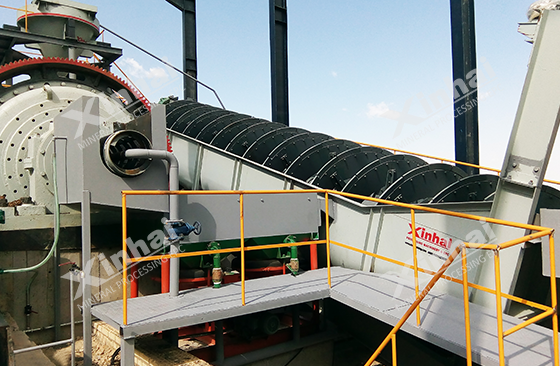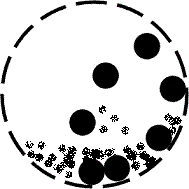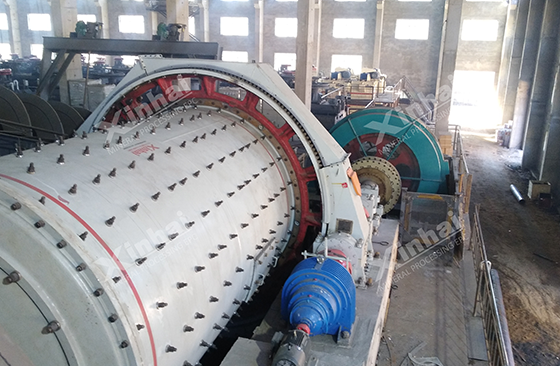
The efficiency of grinding machine is a crucial link in the mining production process, which directly affects the final output and quality of the ore. There are many factors that affect grinding efficiency, including the form, specifications, materials of the grinding equipment, and the properties of the original ore. In addition, operational factors also play a vital role in improving grinding efficiency. This article will discuss in detail the main factors that affect efficiency of grinding machine and propose methods and strategies to optimize these factors.
Grinding methods are usually divided into dry and wet grinding. Dry grinding refers to grinding in a dry state, which is suitable for certain specific ores and process flows. Wet grinding is grinding in water, which is usually suitable for most ores. Wet grinding has higher grinding efficiency because water can reduce friction and increase the impact force of the grinding medium, thereby improving the grinding effect. However, wet grinding also needs to consider the utilization and treatment costs of water resources. Therefore, the selection of an appropriate grinding method of grinding machine needs to be comprehensively considered based on the properties of the ore and production requirements.

The feeding speed refers to the speed at which ore is added to the grinding machine per unit time. An appropriate feeding speed can ensure sufficient contact between the grinding medium and the ore, thereby improving the grinding efficiency. If the feeding speed is too fast, the contact between the ore and the medium is insufficient, and the grinding efficiency is reduced; if the feeding speed is too slow, the production capacity of the mill cannot be fully utilized. Therefore, reasonable adjustment of the feeding speed is an important means to improve the grinding efficiency.
The medium addition system includes the size, proportion and filling rate of the medium. Grinding media usually refers to steel balls or steel rods used in the grinding process. Different sizes of media have different grinding effects. Large-size media are mainly used to crush large ores, while small-size media are used for fine grinding. The proportion and filling rate of the media also have a significant impact on grinding efficiency. Reasonable media ratio and appropriate filling rate can ensure full contact between the media and ore, thereby improving efficiency of grinding machine.

The rotating speed of grinding machine has a direct impact on the grinding efficiency. The appropriate speed can make the grinding medium form an ideal motion state in the mill cylinder, thereby improving the grinding effect. If the speed is too high, the medium may be thrown onto the cylinder wall by centrifugal force and lose the grinding effect; if the speed is too low, the kinetic energy of the medium is insufficient, and the grinding effect is also unsatisfactory. Therefore, adjusting the mill speed is one of the key factors to improve the grinding efficiency.
Appropriate Slurry concentration of grinding machine can improve working efficiency, because the appropriate concentration can ensure sufficient contact between the ore and the medium. If the concentration is too high, the viscosity of the slurry increases, the movement of the grinding medium is restricted, and the grinding efficiency decreases; if the concentration is too low, the slurry is too diluted, the contact between the ore and the medium is insufficient, and the grinding effect is also unsatisfactory. Therefore, controlling the grinding concentration within a reasonable range is an important measure to improve grinding efficiency.

The classifier is a device used to separate qualified fine-grained ores from unqualified coarse-grained ores during the grinding process. The overflow and fineness of the classifier directly affect the grinding effect. Appropriate overflow and fineness can ensure that the grinding products meet the predetermined particle size requirements, thereby improving the grinding efficiency. If the overflow of the classifier is too high, the fine-grained ore cannot be discharged in time, resulting in over-grinding and reduced grinding efficiency; if the overflow is too low, the qualified fine-grained ore cannot be separated in time, and the grinding effect is also unsatisfactory. Therefore, reasonably adjusting the overflow and fineness of the classifier is an important means to improve the grinding efficiency.

The ball-to-material ratio refers to the ratio of grinding medium to ore, and the return sand ratio refers to the proportion of ore returned to the grinding system during cyclic load. A reasonable ball-to-material ratio and return sand ratio can ensure full contact between the grinding medium and the ore, thereby improving the grinding efficiency. If the ball-to-material ratio is too high, the kinetic energy of the grinding medium will increase and the grinding effect will be significantly improved; if the ball-to-material ratio is too low, the kinetic energy of the grinding medium will be insufficient and the grinding effect will decrease. The sand return ratio affects the cyclic load of the grinding system. A reasonable sand return ratio can improve the processing capacity of the grinding system, thereby improving the grinding efficiency.
Operation level and operation system are important factors affecting grinding efficiency. Formulating a scientific and reasonable operation system to ensure that workers have a high level of operation can effectively improve grinding efficiency. Operators need to adjust grinding parameters in time according to the actual conditions of the ore properties and grinding equipment to ensure that the grinding system operates in the best condition. For example, operators should regularly check the wear of the grinding media and replace the media with severe wear in time; regularly check the operation of the mill and perform maintenance and maintenance in time; according to the changes in the properties of the ore, timely adjust the parameters such as feed speed and grinding concentration to ensure the stable operation of the grinding system.

There are many factors that affect the grinding efficiency of the grinding machine, including grinding method, ore feeding speed, medium addition system, grinding machine speed, grinding concentration, classifier overflow and fineness, ball-to-material ratio and return sand ratio, etc. By rationally optimizing these factors, the grinding efficiency can be significantly improved, thereby improving the final output and quality of the ore. In the actual production process, it is necessary to comprehensively consider various factors and formulate a scientific and reasonable operating system according to the specific situation to ensure that the grinding system operates in the best condition. Only in this way can we reduce production costs and achieve good economic benefits while ensuring production efficiency.
To find out more about our products and solutions, please fill out the form below and one of our experts will get back to you shortly.